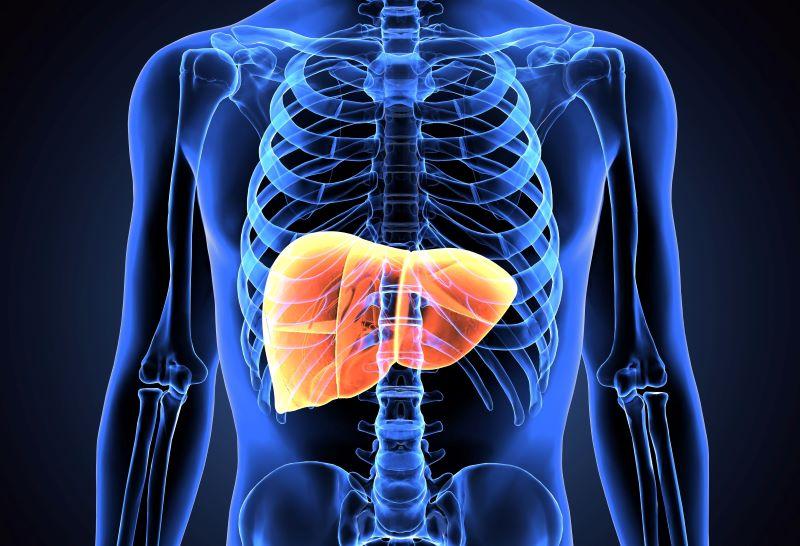Get Healthy!

- Cara Murez
- Posted February 13, 2023
Exercise Can Help Shed Dangerous Fat Around the Liver
Often, patients with nonalcoholic fatty liver disease are advised to lose weight, but that can be hard to do and takes precious time.
Now, researchers report they have found another strategy can help lower liver fat in people with this condition, which affects nearly 30% of the global population.
Exercise of about 150 minutes each week at a moderate intensity -- the exact recommendation from public health experts at the U.S. Department of Health and Human Services -- significantly reduced liver fat in patients, the new meta-analysis showed.
"I spend a lot of my time trying to help improve the lives of our patients with nonalcoholic fatty liver disease [NAFLD],"said Dr. Jonathan Stine. He is an associate professor of medicine and public health sciences and a hepatologist at Penn State Health Milton S. Hershey Medical Center, in Hershey, Pa.
"At this point in time, we still don't have a regulatory agency-approved drug therapy or even a cure for this condition. And there are roughly a hundred million adults in this country that have this,"Stine noted.
While research had shown that exercise can improve liver fat, physical fitness, body composition and quality of life, there was no known specific amount of exercise that would do this.
For this study, the researchers considered a 30% relative reduction in liver fat -- measured by MRI scans -- to be meaningful improvement. Then, they reviewed 14 randomized controlled trials with a total of 551 people with NAFLD.
The investigators found that, independent of weight loss, exercise was 3.5 times more likely to achieve this 30% reduction in liver fat compared to standard care.
Then they determined the optimal dose of exercise, finding that 39% of patients who were exercising briskly for 150 minutes per week or more achieved a significant treatment response compared to 26% of those who were exercising less than that.
"There's more and more evidence that exercise, even if you don't lose a single pound, has many beneficial effects,"Stine said. "I would really challenge the thinking that we prescribe exercise as a way for somebody to lose weight, but rather this can be thought of more to improve overall health in the absence of clinically significant weight loss."
These reductions were similar to those reported in early-phase drug trials for those with "NASH," which the U.S. National Institutes of Health describes as inflammation and liver damage along with fat in the liver.
An example of moderate exercise would be a brisk walk in which a person might be starting to get sweaty but can still hold a conversation with a walking partner, Stine said. Another example would be light cycling.
"The great part of moderate-intensity activity, it's really something anybody can do, even a sedentary population,"Stine said.
Fat in the liver ultimately leads to inflammation and can progress over time to liver fibrosis, cirrhosis, end-stage liver disease or liver cancer.
How long it would take for the exercise regimen to work isn't totally clear, but the studies in the meta-analysis ranged from four weeks to one year.
Stine suggests moving past being fixated on the numbers and toward becoming more physically active.
"Really just focusing on the activity rather than the weight loss is the most important takeaway from the study, in my opinion,"Stine said.
The findings were published online recently in the American Journal of Gastroenterology.
Losing weight has been the cornerstone of management for NAFLD for a long time, and exercise along with dietary changes are an important part of that, said Dr. Ani Kardashian, an assistant professor of medicine in the division of gastroenterology and liver diseases at the Keck School of Medicine at the University of Southern California in Los Angeles.
"But what this is suggestive of is that you can actually have some reversal of fat just with the exercise, even without the weight loss, which is great and it's actually really great because it's encouraging for patients,"said Kardashian, who was not involved in the study.
Why might exercise reduce liver fat?
Kardashian suggests it might be burning the type of fat that builds up around the stomach area, and that is more associated with fat buildup in the liver.
NAFLD is quite common, she noted.
"And the reason why it's bad is, in the same way that alcohol can cause damage to the liver through inflammation in the liver, fat can do the same exact thing,"Kardashian said.
Kardashian would like to see more research on the impact of exercise on inflammation and scarring of the liver, but said the impact on liver fat would be good information to provide to patients.
"My message to my patients is going to be that regular exercise can have a very positive effect on the liver. Even if you're struggling with weight loss, it can still lead to the amount of fat in the liver going down or being reduced,"Kardashian said.
More information
The U.S. National Institute of Diabetes and Digestive and Kidney Diseases has more on nonalcoholic fatty liver disease.
SOURCES: Jonathan Stine, MD, MSc, associate professor, medicine and public health sciences, and hepatologist, Penn State Health Milton S. Hershey Medical Center, Hershey, Pa.; Ani Kardashian, MD, assistant professor, medicine, division of gastroenterology and liver diseases, Keck School of Medicine, University of Southern California, Los Angeles; American Journal of Gastroenterology, Jan. 30, 2023, online







